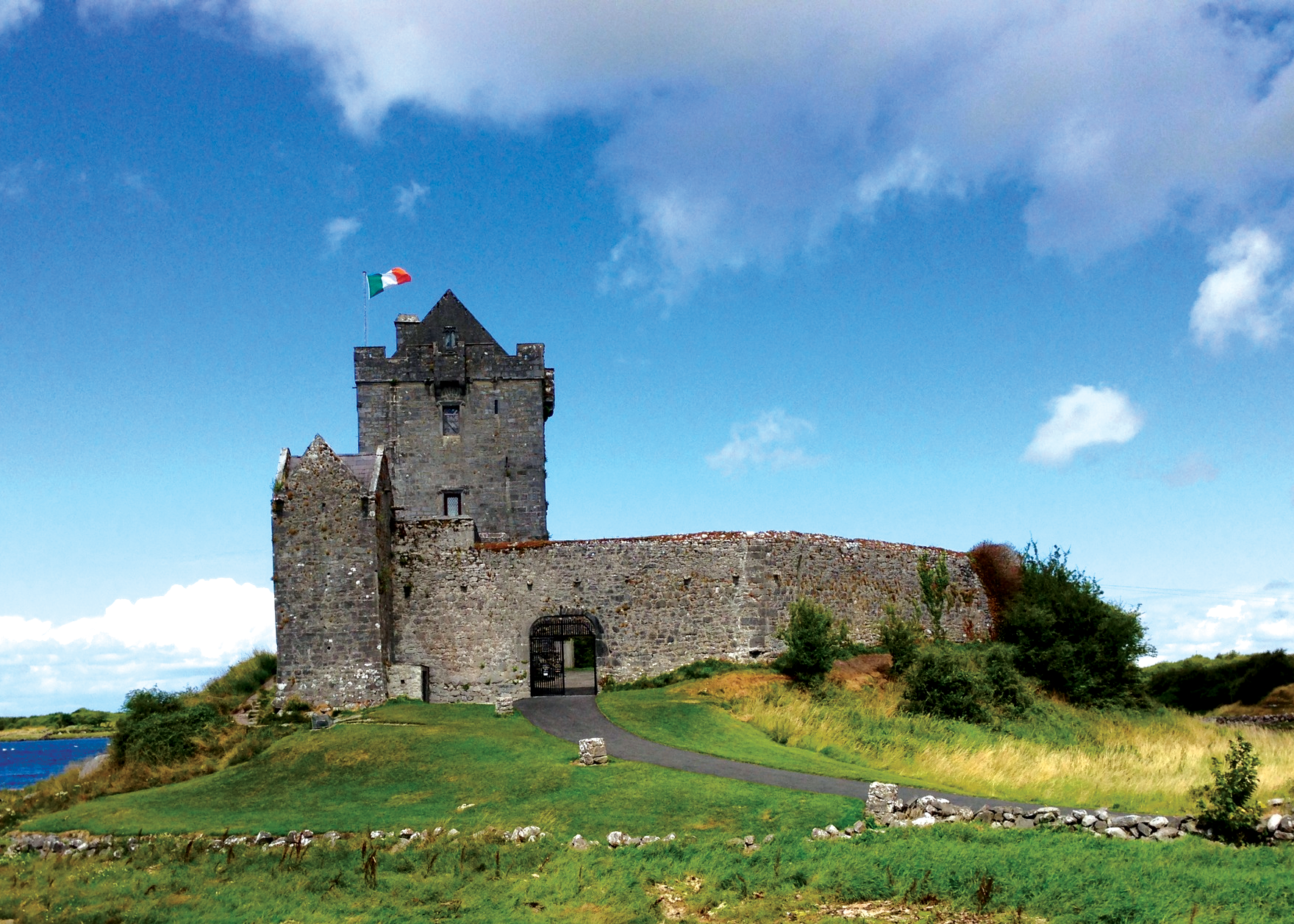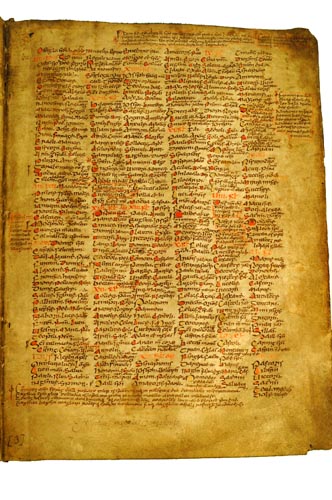|
Modiúit
Modiúit () was an early successor of Saint Kerrill, Bishop of the kingdom of Soghain in what is now County Galway. Modiúit established a church at what is now Killamude, in the parish of Ballymacward. Killamude derives from ''Cill Modiúit'' ('the church of Modiúit'). Its foundations can still be seen in the townland of Killamude West. His feast day was celebrated on 12 February, and is listed as such in the Martyrology of Tallaght The ''Martyrology of Tallaght'', which is closely related to the '' Félire Óengusso'' or ''Martyrology of Óengus the Culdee'', is an eighth- or ninth-century martyrology, a list of saints and their feast days assembled by Máel Ruain and/o ... and the '' Félire Óengusso''. His diocese is thought to have been the extent of the Soghain kingdom. Sources *Mannion, Joseph (2004). ''The Life, Legends and Legacy of Saint Kerrill: A Fifth-Century East Galway Evangelist''. . Medieval Irish saints People from County Galway 6th-century ... [...More Info...] [...Related Items...] OR: [Wikipedia] [Google] [Baidu] |
Soghain
The Soghain were a people of ancient Ireland. The 17th-century scholar Dubhaltach Mac Fhirbhisigh identified them as part of a larger group called the Cruithin. Mac Fhirbhisigh stated that the Cruithin included "the Dál Araidhi ál nAraidi the seven Lóigisi oígisof Leinster, the seven Soghain of Ireland, and every Conaille that is in Ireland." Locations The locations of four of the seven Soghain are as follows: * A branch in the territory of Fernmag (barony of Farney, County Monaghan). * In Delvin (County Westmeath) where a Soghain tribe lived with a branch of the Delbhna in an area called ''Trícha cét na Delbna Móire agus na Sogan''. * The Corcu Shogain, who were subject to the Benntraige under the Eoghanacht. An Ogham inscription discovered near Aglish in the barony of East Muskerry, some twelve miles west of the city of Cork, displays the words ''MUCOI SOGINI'', which probably means "of the Corcu Sogain". * The Soghain of Connacht were located in central eas ... [...More Info...] [...Related Items...] OR: [Wikipedia] [Google] [Baidu] |
Kerrill
Saint Kerrill aka Caireall mac Curnain was a Christian missionary in what is now east County Galway, alive in the mid-to-late 5th century. Origins Caireall mac Curnain was a member of the Soghain people of Ireland, specifically those located in the kingdom of that name in what is now east County Galway. Dubhaltach Mac Fhirbhisigh identified them as part of a larger group called the Cruithin, and stated of them: ''"Of the Cruithin of Ireland are the Dál Araidhi (Dál nAraidi), the seven Lóigisi of Leinster, the seven Soghain of Ireland, and every Conaille (see Conaille Muirtheimne) that is in Ireland."'' The Soghain of Connacht were described by Seán Mór Ó Dubhagáin in his poem ''Triallam timcheall na Fodla'' where he states that: ''"The six Sogain let us not shun/their kings are without oblivion/Good the host of plundering excursions/to whom the spear-armed Sogain is hereditary."'' While the Book of Lecan lists their six branches as ''Cinel Rechta, Cinel Trena, Cinel ... [...More Info...] [...Related Items...] OR: [Wikipedia] [Google] [Baidu] |
County Galway
"Righteousness and Justice" , anthem = () , image_map = Island of Ireland location map Galway.svg , map_caption = Location in Ireland , area_footnotes = , area_total_km2 = 6151 , area_rank = 2nd , seat_type = County town , seat = Galway , population_total = 276451 , population_density_km2 = auto , population_rank = 5th , population_as_of = 2022 , population_footnotes = , leader_title = Local authorities , leader_name = County Council and City Council , leader_title2 = Dáil constituency , leader_name2 = , leader_title3 = EP constituency , leader_name3 = Midlands–North-West , subdivision_type = Country , subdivision_name = Ireland , subdivision_type1 = Province , subdivision_name1 = Connacht , subdivisi ... [...More Info...] [...Related Items...] OR: [Wikipedia] [Google] [Baidu] |
Ballymacward
Ballymacward () is a village in County Galway, Ireland, on the R359 regional road between the main road and rail networks which traverse east-west, 24 kilometres from Ballinasloe and approximately 48 kilometres from Galway City. It was once part of the kingdom of the Soghain of Connacht. It lies 4 km north of Woodlawn railway station. This station opened in 1858 and was closed for goods traffic in 1978. It is on the main Iarnród Éireann Intercity line from Dublin to Galway, situated between Ballinasloe and Attymon halt Attymon railway station ( ga, Stáisiún Áth Tíomáin) serves the townland of Attymon in County Galway, Ireland. The station is on the Dublin to Galway Rail service. Passengers to or from Westport railway station travel to Athlone and change ... stations. See also * List of towns and villages in Ireland References External links Landed Estates Database - Woodlawn House [...More Info...] [...Related Items...] OR: [Wikipedia] [Google] [Baidu] |
Martyrology Of Tallaght
The ''Martyrology of Tallaght'', which is closely related to the '' Félire Óengusso'' or ''Martyrology of Óengus the Culdee'', is an eighth- or ninth-century martyrology, a list of saints and their feast days assembled by Máel Ruain and/or Óengus the Culdee at Tallaght Monastery, near Dublin. The '' Martyrology of Tallaght'' is in prose and contains two sections for each day of the year, one general and one for Irish saints. It also has a prologue and an epilogue.Welch, Robert, & Bruce Stewart, ''The Oxford Companion to Irish Literature'' (Oxford University Press, 1996, )p. 359at google.co.uk ''Prologue'' and Irish paganism The prologue contains a famous verse on the declining pagan faith in Ireland: ''Senchatraig na ngente/iman roerud rudad/itfossa can adrad/amail Lathrach Lugdach.'' ''Ind locáin rogabtha/dessib ocus trírib/it rúama co ndálib/co cétaib, co mílib.'' which reads in translation as ''The old cities of the pagans to which length of occupatio ... [...More Info...] [...Related Items...] OR: [Wikipedia] [Google] [Baidu] |
Medieval Irish Saints
In the history of Europe, the Middle Ages or medieval period lasted approximately from the late 5th to the late 15th centuries, similar to the Post-classical, post-classical period of World history (field), global history. It began with the fall of the Western Roman Empire and transitioned into the Renaissance and the Age of Discovery. The Middle Ages is the middle period of the three traditional divisions of Western history: classical antiquity, the medieval period, and the modern history, modern period. The medieval period is itself subdivided into the Early Middle Ages, Early, High Middle Ages, High, and Late Middle Ages. Population decline, counterurbanisation, the collapse of centralized authority, invasions, and mass migrations of tribes, which had begun in late antiquity, continued into the Early Middle Ages. The large-scale movements of the Migration Period, including various Germanic peoples, formed new kingdoms in what remained of the Western Roman Empire. In the ... [...More Info...] [...Related Items...] OR: [Wikipedia] [Google] [Baidu] |
People From County Galway
A person ( : people) is a being that has certain capacities or attributes such as reason, morality, consciousness or self-consciousness, and being a part of a culturally established form of social relations such as kinship, ownership of property, or legal responsibility. The defining features of personhood and, consequently, what makes a person count as a person, differ widely among cultures and contexts. In addition to the question of personhood, of what makes a being count as a person to begin with, there are further questions about personal identity and self: both about what makes any particular person that particular person instead of another, and about what makes a person at one time the same person as they were or will be at another time despite any intervening changes. The plural form "people" is often used to refer to an entire nation or ethnic group (as in "a people"), and this was the original meaning of the word; it subsequently acquired its use as a plural form of ... [...More Info...] [...Related Items...] OR: [Wikipedia] [Google] [Baidu] |




_1938.jpg)